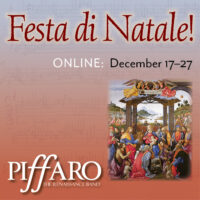Seattle Historical Arts for Kids, Chicago’s Stevenson High School, and a new start-up, Lute4Kids in upstate New York, are among the few U.S. early-music programs devoted to hands-on, pre-collegiate education. It’s a pipeline the field must nurture if it’s to thrive.
‘The future of the lute — and early music in general — will depend on our ability to get young people hooked’
This article was first published in the September 2025 issue of EMAg, the Magazine of Early Music America

At a 2019 conference on lute education, the president of La Société Française de Luth, Pascale Boquet, said that a successful music-education program requires four key elements: recruiting teachers for courses specifically for children; creating tutorials appropriate to their age and abilities; working with luthiers to build smaller-sized instruments that make it easier for smaller hands; and, the key to everything, securing funds to make these custom instruments as well as to secure teaching and performance facilities.
Star lutenist Paul O’Dette, co-artistic director of the Boston Early Music Festival, saw first-hand the success of Boquet’s efforts when he was invited to play a concert and teach an all-day masterclass in Limousin, France in 2021. He was greeted by a gymnasium of some 40 children, all teenagers or younger, and all from programs that grew out of Boquet’s efforts. Buoyed by the students’ energy and enthusiasm, O’Dette recalls thinking: “This is the future of the lute! We just need to figure out how to replicate it in the U.S. and other countries.”
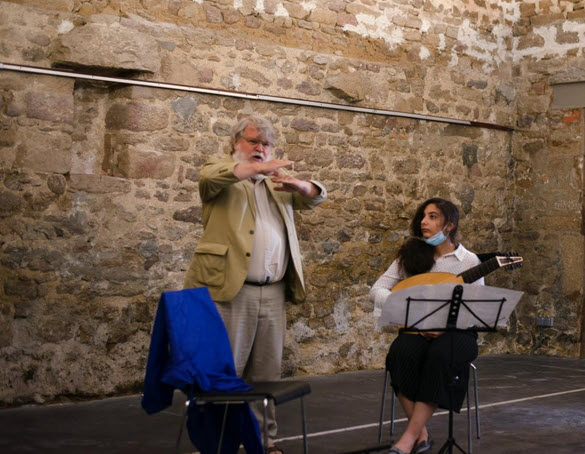
The organization Boquet leads, the Lute Society of France, is a non-profit and receives no government subsidies. The society’s activities are funded by membership dues and proceeds from the sale of sheet music as well as music collections used for teaching. Volunteers run its journal, Journées du Luth. For older students, Boquet explains, French conservatories that teach the lute are managed by the Ministry of Culture and subsidized by local municipalities — a stark contrast with the U.S., where government support for music education at local, state, or federal levels varies widely or is nonexistent.
Prior to Boquet’s remarkable vision and planning, most lute instruction — especially historical performance-based — had been geared toward experienced performers who already had a certain level of education and skill. At the height of his popularity, in the 1960s and ’70s, English guitarist and lutenist Julian Bream (1933-2020) inspired many budding musicians to take up the lute. Although Bream and his Consort played on period instruments, their approach was not based on historical performance practice.
‘The future of the lute — and early music in general — will depend on our ability to get young people hooked’
That was taken up by the next generation, including O’Dette, Nigel North, and Paul Beier, who delved into historical treatises and styles in their own studios. Much of their pedagogical practices were HP-focused and were intended for collegiate-level education of intermediate to advanced performers who had started on guitar.
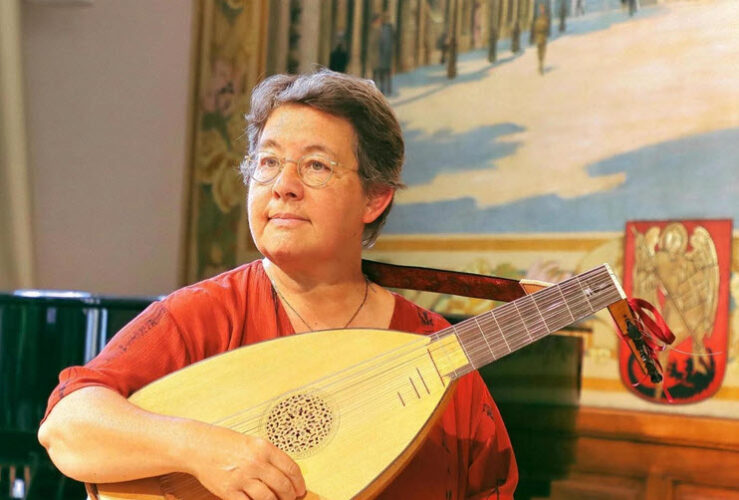
Knowing today’s state of lute education, O’Dette declared at the Lute Society of America’s 2024 LuteFest that “the future of the lute — and early music in general — will depend on our ability to get young people hooked.” He encouraged the 60-some people in the room to build on Boquet’s successes.
Birth of Lute4Kids
Pedro Sperb, one of O’Dette’s doctoral students at the Eastman School of Music, was at that LuteFest and acted quickly to make a difference. He enlisted the help of luthier Daniel Yost, who agreed to make a few prototype instruments, appropriately sized for children. To help cover initial costs including flyers, a banner, lute cases, and strings, Sperb received Eastman’s $750 Institute for Music Leadership Mentorship Grant.
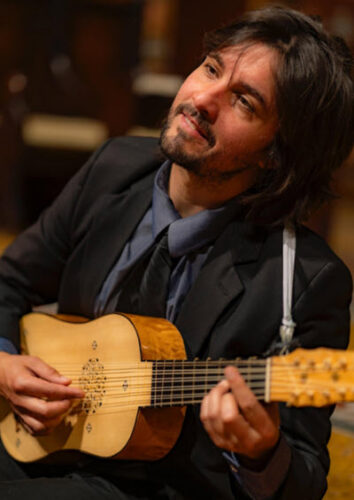
Sperb launched Lute4Kids in October 2024 and has already introduced the lute to over 500 youngsters in upstate New York. What started as mini concerts mainly for homeschoolers became a springboard to building an interactive music appreciation project, essentially a “petting zoo” with Sperb managing the presentations in his spare time between doctoral studies and his private studio. Since he started, he has taken the lute into the Strong Museum of Play, the Eastman Community School, the Albion Library, and Two Saints Episcopal Church, among other schools and spaces.
The near-term goal is to develop lesson plans that adhere to the New York State Education Department curriculum standards for the arts, with graded curriculum materials for students to learn the lute — similar to what Boquet and her colleagues did in Europe.
Asked about the Lute4Kids’ strengths and limitations, Sperb and Yost mentioned two important elements, both linked to its start-up budget. Sperb is doing outreach events as a grassroots effort in preparation for the next step, which can start once they have instruments to lend out. (The lutes on hand are only used at the workshop.) The team is hoping to partner with the Lute Society of America’s lute rental collection, so potential students might begin studying the lute with him. The future of Lute4Kids, they say, depends on it being “fully embraced” by the Lute Society of America.
Secondly, the cost of an instrument is a significant barrier. Yost says it’s difficult to hand-make a lute for less than $1,000 — far too expensive for many parents of children who are just being introduced to the instrument. Through an $800 Lute Society of America outreach grant, Yost and Sperb hope to invest in new technologies. On Yost’s wish list is a computer-controlled cutting machine called a CNC router, as well as laser cutters and 3-D resin printers. These will allow the luthier to produce low-cost custom lutes quickly and effectively. (Increasingly, 3-D resin and carbon fiber materials are used to make everything from quality recorders and violin bows to bicycles and airplane parts — almost anything that was traditionally made of metal or wood.)
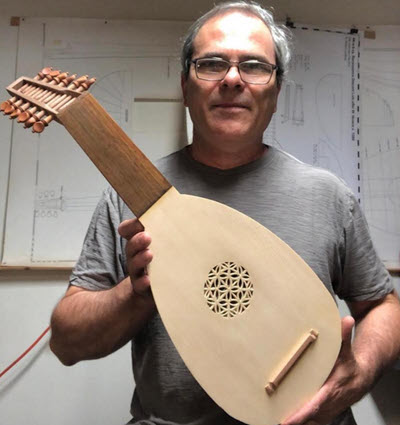
According to Yost, the machines will allow him to “use some traditional techniques and materials, but reduce the price of materials, reduce the hours, but keep the essence, keep a [traditional] soundboard. That is the instrument: 80 percent of the sound — the sound quality and stability of the instrument — comes from a good soundboard.” In the future, the instruments Sperb uses to teach children may not be historically accurate, but will be more economically accessible to new learners, in the same way as inexpensive plastic recorders are to young children.
It’s clear that educator Sperb prioritizes access, durability, and affordability, while luthier Yost is concerned with playability, quality of sound, and artistry. Yost does not want to produce a cheap instrument “like factory violins that come with the bridge in bad position, my concern is to build a lute that’s perfectly playable and attractive.”
Pre-College Pipeline
There’s been alarm recently that some U.S. university-level classes and degrees are shrinking or disappearing — see “The Ups (and Downs) of Collegiate Early Music” in the May 2025 issue of this magazine — and one long-term solution may be to immerse children in historical performance early on, as a mother tongue. So where is that pre-college pipeline? Surveying HP education for young learners turns up very few programs that are more than just “appreciation.”
There is, of course, a nearly 75-year-old North American effort to teach children the recorder in primary schools, as an introduction to music. Typically these classes are for younger students; by fifth grade, kids pick a band or orchestral instrument to play. Despite its longevity, there is no overall structure to support ongoing recorder learning through primary and secondary schooling.
Jody Miller, a retired middle school band director and vice president of the American Recorder Society, lives in Atlanta and is active with several local ensembles for adult amateurs of varying ages and skills. He notes that “most U.S. schools don’t have a recorder program that continues past the introductory stages, which surely impacts the number of people who study recorder. So few opportunities exist that only the most motivated students can find a way to keep playing seriously.”
For nearly a decade, there were pre-college recorder classes at Indiana University’s Jacob School of Music (ages 5-18) that aimed to bridge that gap. Recorder player Eva Legêne started it in 2005 and turned it over to Laura Hagen, who ran it from 2009 to about 2012. Like the school program, younger students were taught using familiar tunes. When they reached an intermediate level they then focused on Renaissance and Baroque compositions, with some 20th-century works and popular tunes in the mix. Unfortunately, the program is no longer active.
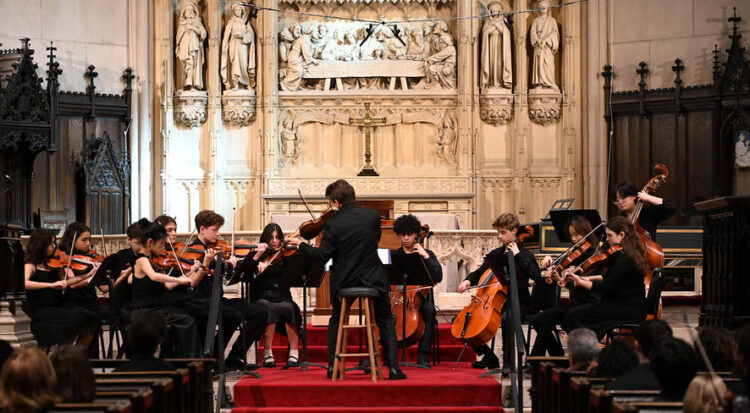
There are just a few nationally known early-music programs for under-18-year-olds, some of which have performed on Early Music America’s Young Performers Festival (YPF), an annual event now in its 15th year, for collegiate and pre-college ensembles. (Notably, many past YPF ensembles have disappeared or gone dormant.)
The Baroque Orchestra from the Special Music School High School in New York City, led by Jude Ziliak, performed at the EMA Summit in Boston in 2023. Ziliak’s ensemble takes a historical approach but plays on modern instruments (and tunes to A=440).
The Davis Senior High School Baroque Ensemble, in Davis, Calif., is led by violinist Angelo Moreno and performed a virtual YPF concert in 2020. The ensemble focuses on Baroque and early-Classical repertoire. They use modern string instruments, which are more easily accessible, but modified with Baroque tailpieces and bridges, gut strings, and are played with Baroque-style bows.
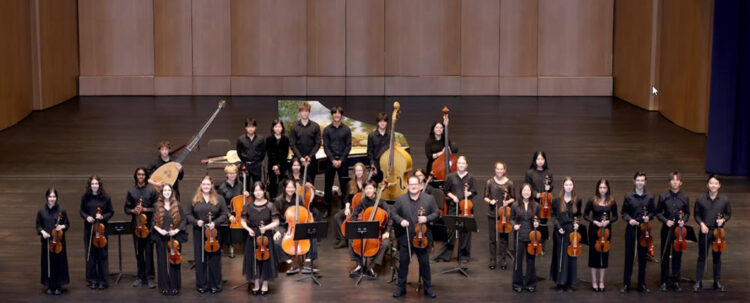
In the Houston area, Pedro Funes has led much-admired extracurricular viola da gamba ensembles for his middle and high school students, all of whom also play modern instruments in the school orchestra.
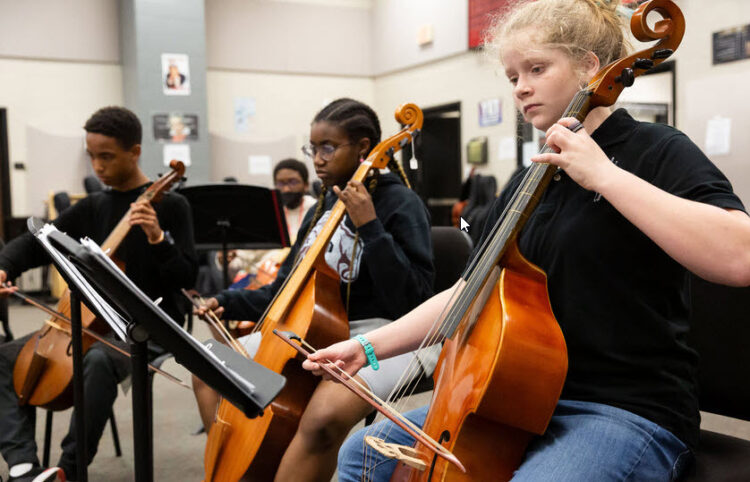
In Chicago, Stevenson High School’s Baroque Ensemble and Viol Consort, directed by violinist Enrique Vilaseco, bills itself as one of the few high school programs in the U.S. featuring historical performance on period instruments. (Stevenson performed at a 2025 Boston Early Music Festival fringe concert.)
Stevenson’s program, in its 18th year, started as an experiment with just enough money to buy a few instruments. It then became an official school club. It continued to grow “haphazardly,” as Vilaseco describes it, because his school has “an administration that values the arts and has the resources to support a specialized program in early music. It is important for string music educators to understand the value in what happens in early-music ensembles and how that applies to other ensembles; this is alternative strings. This is about getting kids excited about music!”
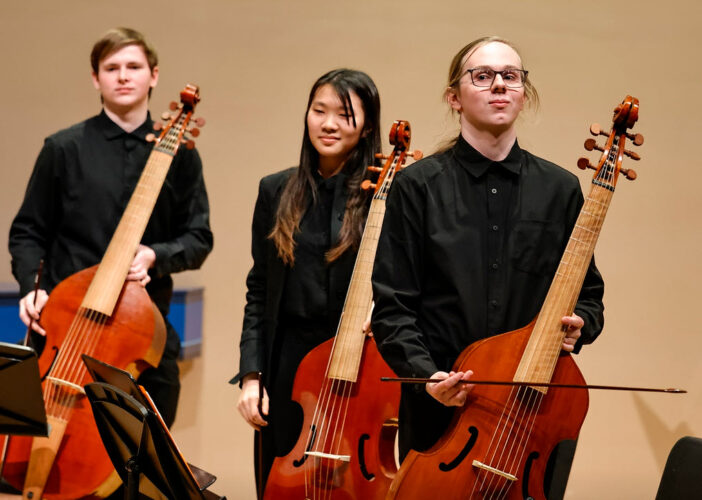
The longest-running of them, Seattle Historical Arts for Kids (SHAK), performed on an EMA Young Performer Festival concert in 2015.
SHAK was started in 2005 by Shulamit Kleinerman and is devoted to historical performances in music and theater. Kleinerman, a specialist on Medieval vielle and Renaissance violin, told me that her motivation comes from young performers’ potential. “It’s marvelous to see kids and teens come to understand what really brings them to life as individuals,” she says. “Historical performance tends to appeal to young people who enjoy feeling unique or who thrive with intellectual challenges, such as the opportunity to make independent musical choices and to communicate with subtlety and cleverness rather than with the competitive brawn of [mainstream] classical music.”
‘Historical performance tends to appeal to young people who enjoy feeling unique or who thrive with intellectual challenges’
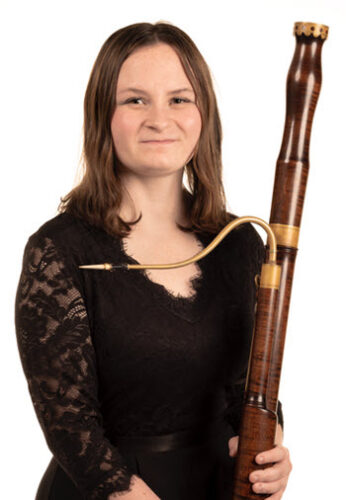
SHAK is funded 50 percent through individual donors, less than 5 percent in grants, and the rest in tuition. In 2020, Kleinerman moved to a sliding-scale, equity-based tuition structure. With that change, attendance in the programs has grown and so has her bottom line. She provides full-tuition scholarships to students who have the greatest need, because there are those who are able to pay a bit more. The fact that she relies on tuition and individual donations, and not grants, shows the gaps that exist in our current arts funding. “Most arts grants exclude education, and most education grants are targeted for school or community programs,” Kleinerman says, so efforts like SHAK that are neither of those are rarely supported; she has to turn to tuition and donation for ongoing support.
Despite the funding challenges inherent in pre-college early-music programs, over the years SHAK has taught hundreds of children. Since teen programs were added in recent years, at least seven alumni are active in early music. Rylie Patching, a Baroque bassoonist who is studying historical performance at the prestigious Schola Cantorum in Basel, Switzerland, notes that her time with SHAK prepared her for advanced studies. “Before SHAK, I didn’t have a good foundation regarding ensemble work and how to be a continuo instrument,” Patching says. “SHAK gave me several opportunities to develop my continuo playing in a safe, guided environment. Because of this, I entered my bachelor’s program in historical performance fully prepared at an advanced level.” (While at SHAK, Patching was one of the rare high schoolers to win an EMA Workshop Scholarship.)
The Future of Pre-College Programs
Just after she started SHAK, Kleinerman wrote an EMAg article, “Getting an Early Start: Children and Historical Performance” (Summer 2006), where she gave the community clear advice, which has yet to be implemented more broadly: “We shouldn’t take original instrument practice to be so complex that only adults should reckon with it. That makes sense only as long as historical performance is an academic matter, studied in the university and exercised in the relative containment of the concert hall.”
Kleinerman told me that, despite the program’s success since she first wrote that statement, there are still struggles because “education is sometimes just as misunderstood and underappreciated within our field as within our culture more generally. No one in our field would say they don’t value education, but it’s eye-opening to see who actually shows up with support.”
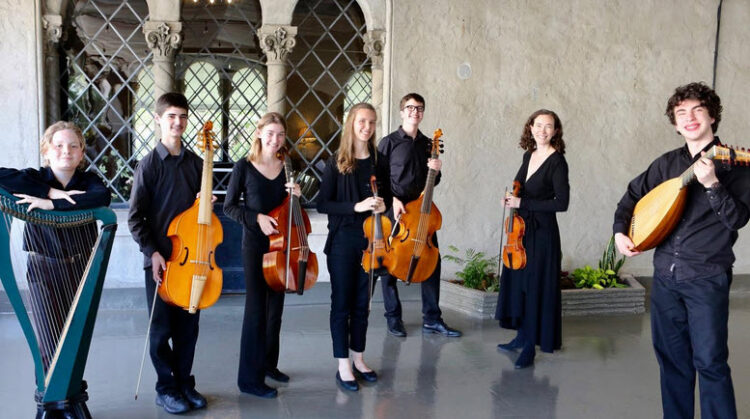
What’s needed, she says, is to make sure there is a future for our field in supporting more pre-college efforts. “Membership orgs and presenting orgs have an opportunity here to help donors visualize what succession planning for our field really takes. And we need granting orgs to move past project-by-project funding — which is great for short-term ideas and new organizations — [and start] giving unrestricted, ongoing support to proven programs so that we can focus on continuing our actual work.”
If more pre-college programs are established with ongoing support, students like bassoonist Patching can jump-start their progress in HP. “Without pre-college programs, skills and knowledge are delayed,” she says. In conversations with her classmates in Basel, “almost every person has said that they wished they had a pre-college program like SHAK when they were young.”
Classmates in Basel ‘wished they’d had a pre-college program like SHAK when they were young’
If those of us who perform, teach, or write about early music wish for it to continue to be a unique discipline, we should take serious consideration of those who have been doing this work for a long time, like Kleinerman, Vilaseco, and Boquet, to nurture the pipeline of students. We need more people doing the work; more consistent long-term funding; more people writing curriculum that is geared toward young people learning early music, not just adults or college students who come to it later; and, in some cases, inexpensive or more durable instruments that are child-sized, even if they are not entirely historically accurate.
With those elements in place, the early-music community will help organizations like Sperb’s Lute4Kids become a fully fledged pre-college lute education program, one that can endure and thrive.
Anna F. Porcaro, a musicologist, lutenist, and freelance author, is on the Board of Directors of the Lute Society of America. She also serves on EMA’s IDEA Task Force and its publication committee. Her articles and reviews appear in the Lute Society of America Quarterly, Soundboard, Notes, and Grove Music Online.

